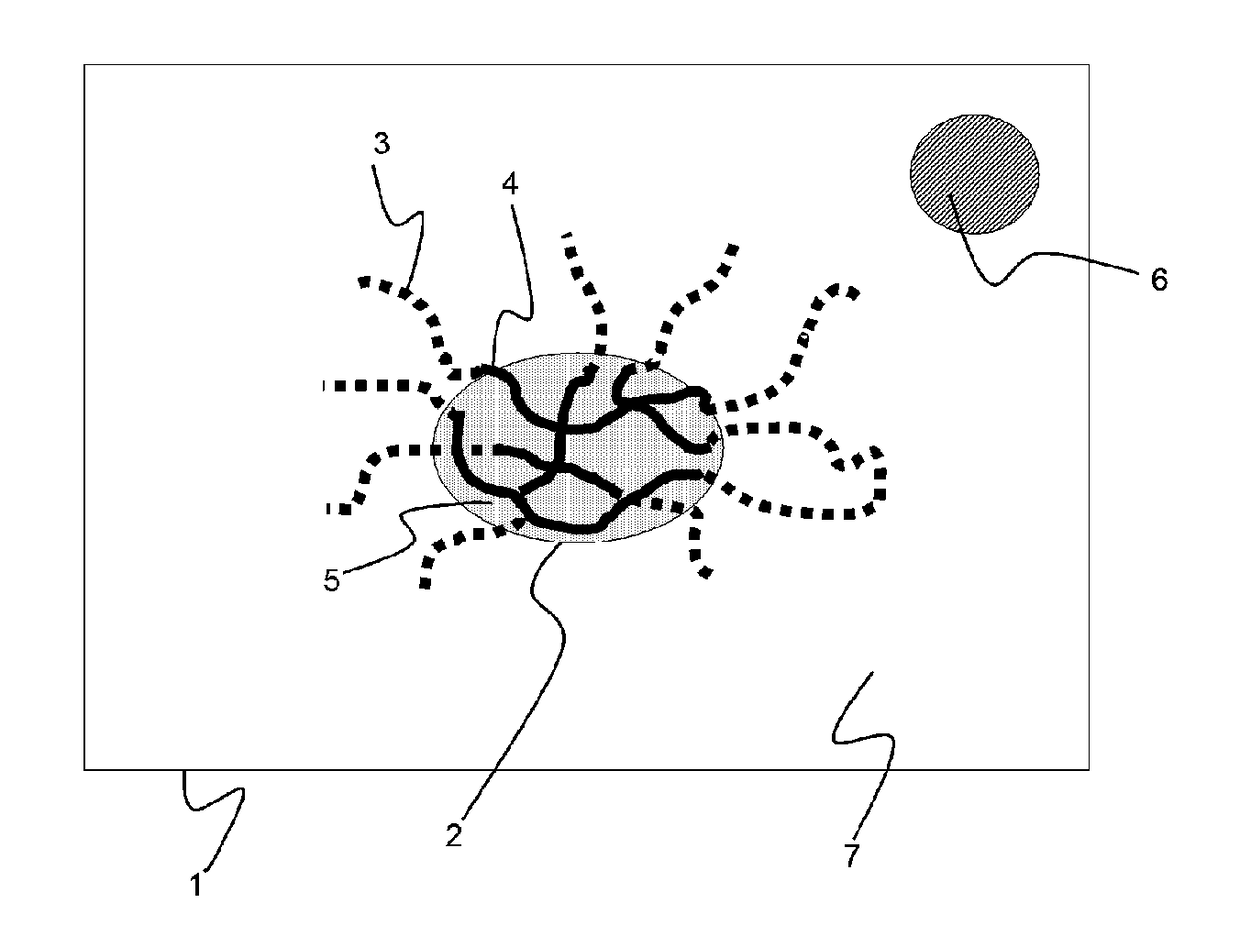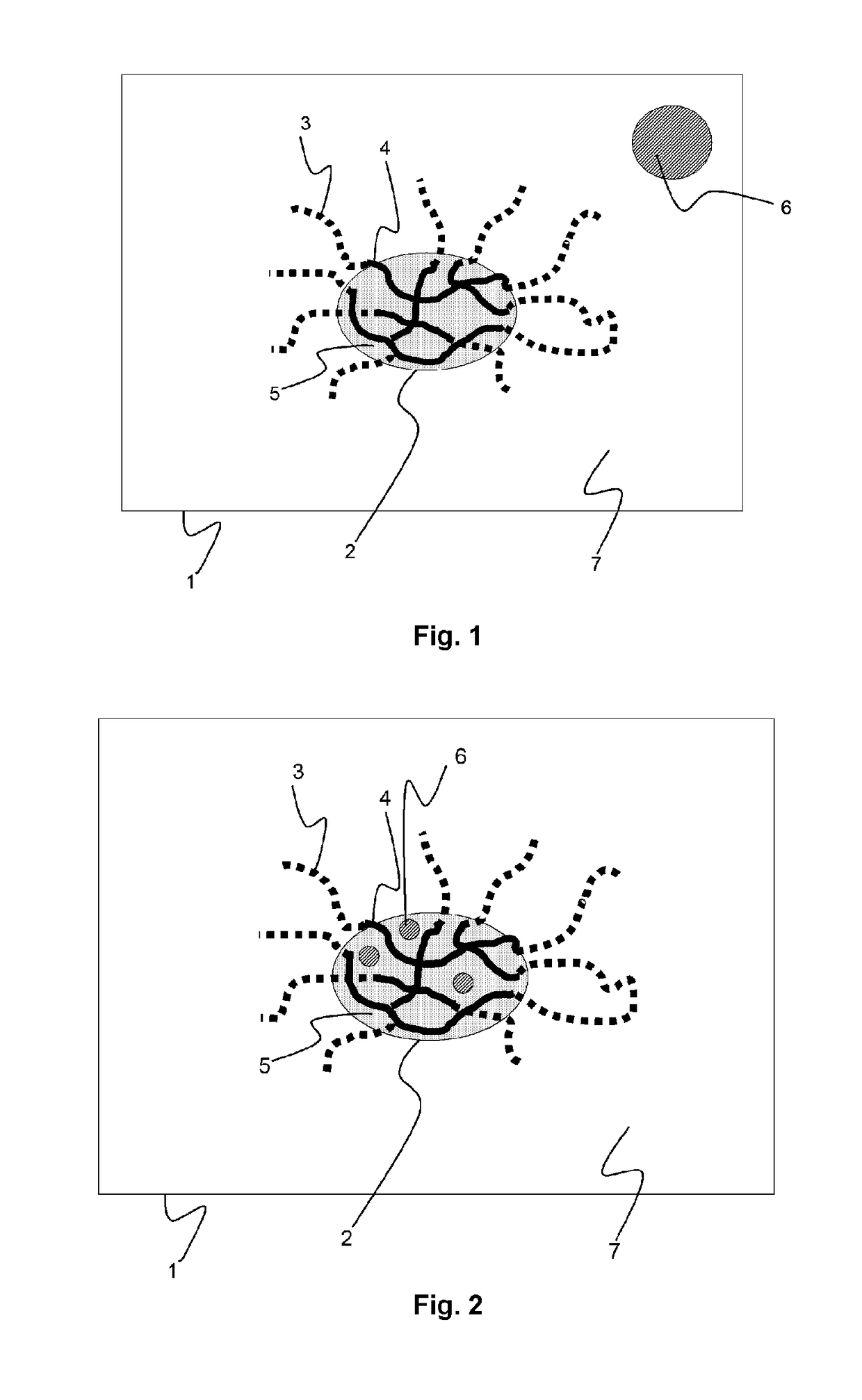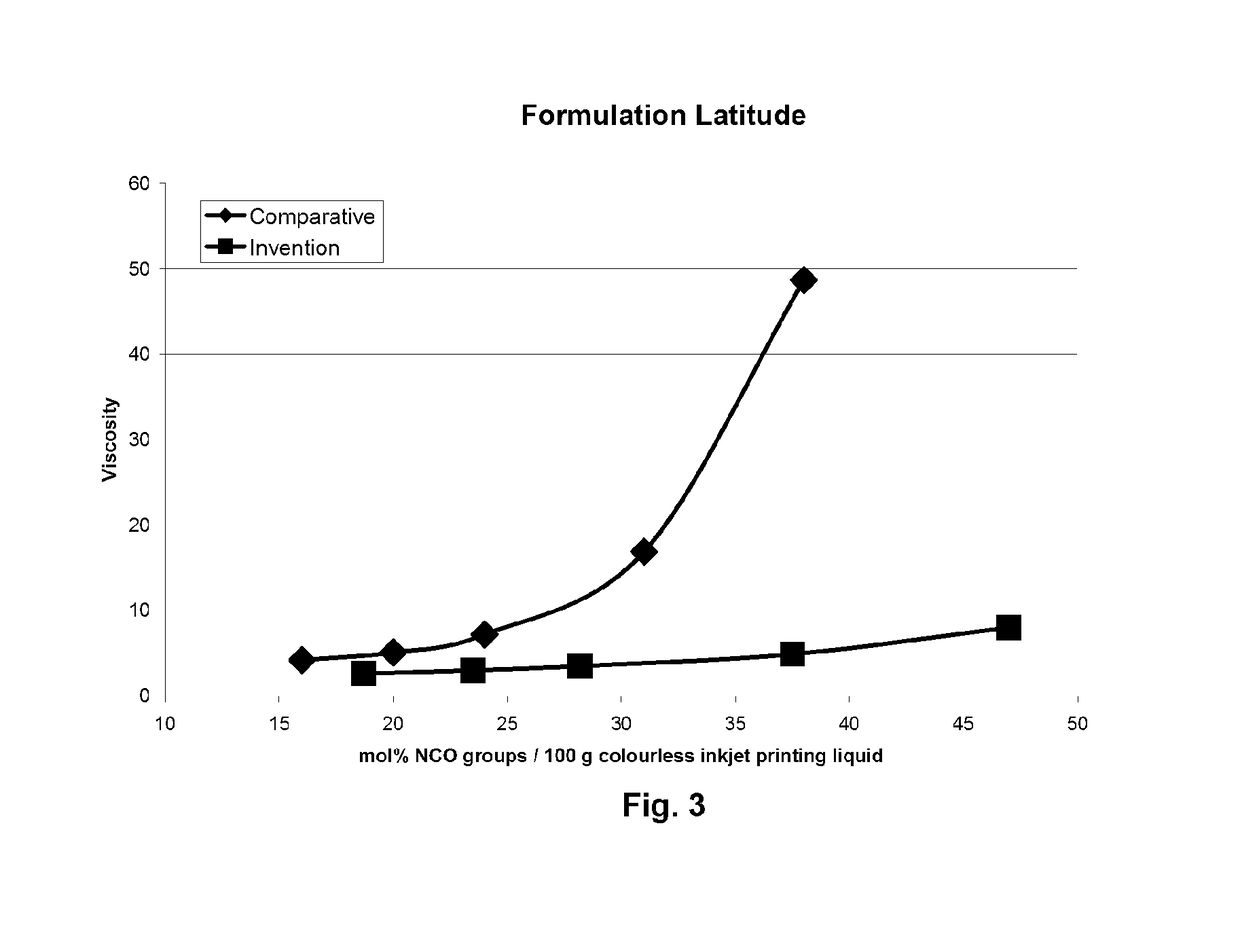Aqueous inkjet printing liquids
a technology of inkjet printing liquid and inkjet printing, which is applied in the direction of dyeing process, inks, textiles and paper, etc., can solve the problems of poor jetting reliability, an essential requirement in an industrial environment, and the decline of analog printing technologies such as screen printing as production technology, and achieves stable dispersion of thermally reactive composite resin particles, high printing reliability, and excellent wash fastness
- Summary
- Abstract
- Description
- Claims
- Application Information
AI Technical Summary
Benefits of technology
Problems solved by technology
Method used
Image
Examples
example 1
[0244]This example illustrates the pigment fixation on textile by using an aqueous cyan pigmented inkjet ink in combination with a colourless inkjet printing liquid according to the present invention.
Preparation of Cyan Pigment Dispersion DISP-1
[0245]An ECM Poly mill, filled for 42% with 0.4 mm yttrium stabilized zirconia beads (“high wear resistant zirconia grinding media” from TOSOH Co.), was preloaded with a solution of 0.124 kg Edaplan in 5.176 kg water. A solution of 11.572 kg Edaplan and 0.267 kg Proxel™ K in 22.861 kg water was prepared in a 60 l vessel and circulated for 5 minutes over the preloaded mill. 10 kg Hostaperm™ B5G-KR was added to the 60 l vessel, while stirring with a Disperlux™ dispenser. The mixture was stirred for 30 minutes. The vessel was reconnected to the mill and the mixture was milled for 7 hours and 45 minutes at a flow rate of 8 litre per minute and a rotation speed of 14.7 m / s. The dispersion was pumped into a 120 litre WIVA vessel. Water was added to...
example 2
[0254]This example illustrates the excellent shelf life and thermal fixation of coloured inkjet printing liquids according to the present invention.
Preparation of Composite-2
[0255]A solution of 14.29 g Trixene™ BI7952 in 40 g ethyl acetate was added to a solution of 25 g Disperbyk™ 190 in 65 g water while stirring with an Ultra-Turrax™ at 20000 rpm for 5 min. Ethyl acetate was removed under reduced pressure at 40° C., while gradually decreasing the pressure until no ethyl acetate was distilled anymore. The average particle size was measured. Composite-2 had an average particle size of 210 nm.
Preparation of Composite-3
[0256]A solution of 14.29 g Trixene™ BI7952 in 40 g ethyl acetate was added to a solution of 20 g Solsperse™ 43000 in 70 g water while stirring with an Ultra-Turrax™ at 20000 rpm for 5 min. Ethyl acetate was removed under reduced pressure at 40° C., while gradually decreasing the pressure until no ethyl acetate was distilled anymore. The average particle size was measur...
example 3
[0260]This example illustrates the advantage of using thermally reactive composite resin particles on the formulation latitude of the inkjet printing liquids compared to using alternative water soluble components present in the composite resin particles.
Preparation of Composite-4
[0261]A solution of 1071 g Trixene™ BI7952 in 1500 g ethyl acetate was added to a solution of 750 g Gohseran™ L0301 in 3200 g water while stirring with an HOMOREX at 10,000 rpm for 5 min. The dispersion was post-treated with a Microfluidizer™ at 300 bar. Ethyl acetate was removed under reduced pressure at 40° C., while gradually decreasing the pressure until no ethyl acetate was distilled anymore. The average particle size was measured. Composite-4 had an average particle size of 90 nm.
Preparation of Inkjet Printing Liquids
[0262]The comparative ink jet printing liquids COMP-1 to COMP-5 were formulated by mixing the components according to Table 9.
TABLE 9wt % of componentCOMP-1COMP-2COMP-3COMP-4COMP-5Bayh19.0...
PUM
| Property | Measurement | Unit |
|---|---|---|
| boiling point | aaaaa | aaaaa |
| Tg | aaaaa | aaaaa |
| temperature | aaaaa | aaaaa |
Abstract
Description
Claims
Application Information
 Login to View More
Login to View More - R&D
- Intellectual Property
- Life Sciences
- Materials
- Tech Scout
- Unparalleled Data Quality
- Higher Quality Content
- 60% Fewer Hallucinations
Browse by: Latest US Patents, China's latest patents, Technical Efficacy Thesaurus, Application Domain, Technology Topic, Popular Technical Reports.
© 2025 PatSnap. All rights reserved.Legal|Privacy policy|Modern Slavery Act Transparency Statement|Sitemap|About US| Contact US: help@patsnap.com



